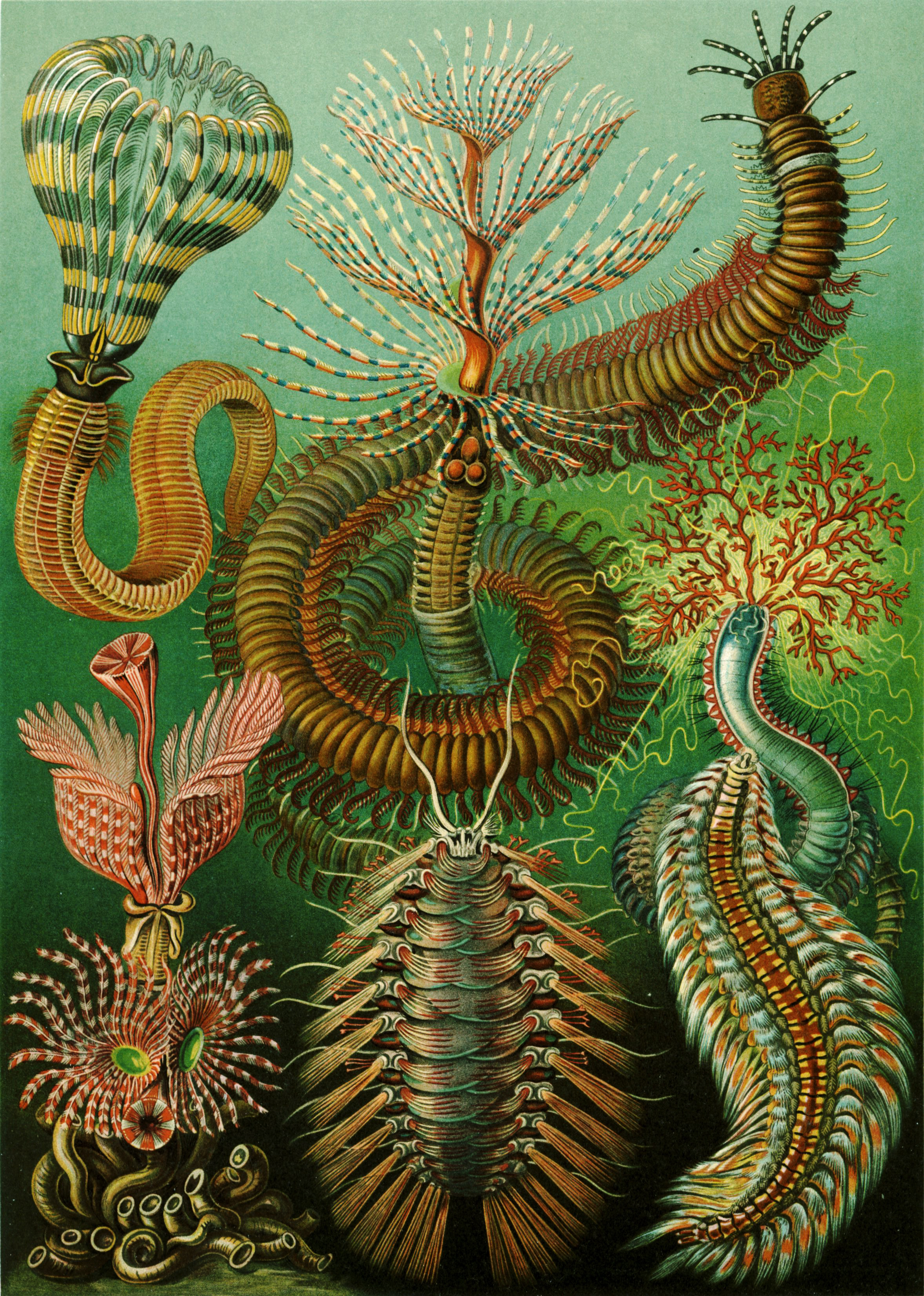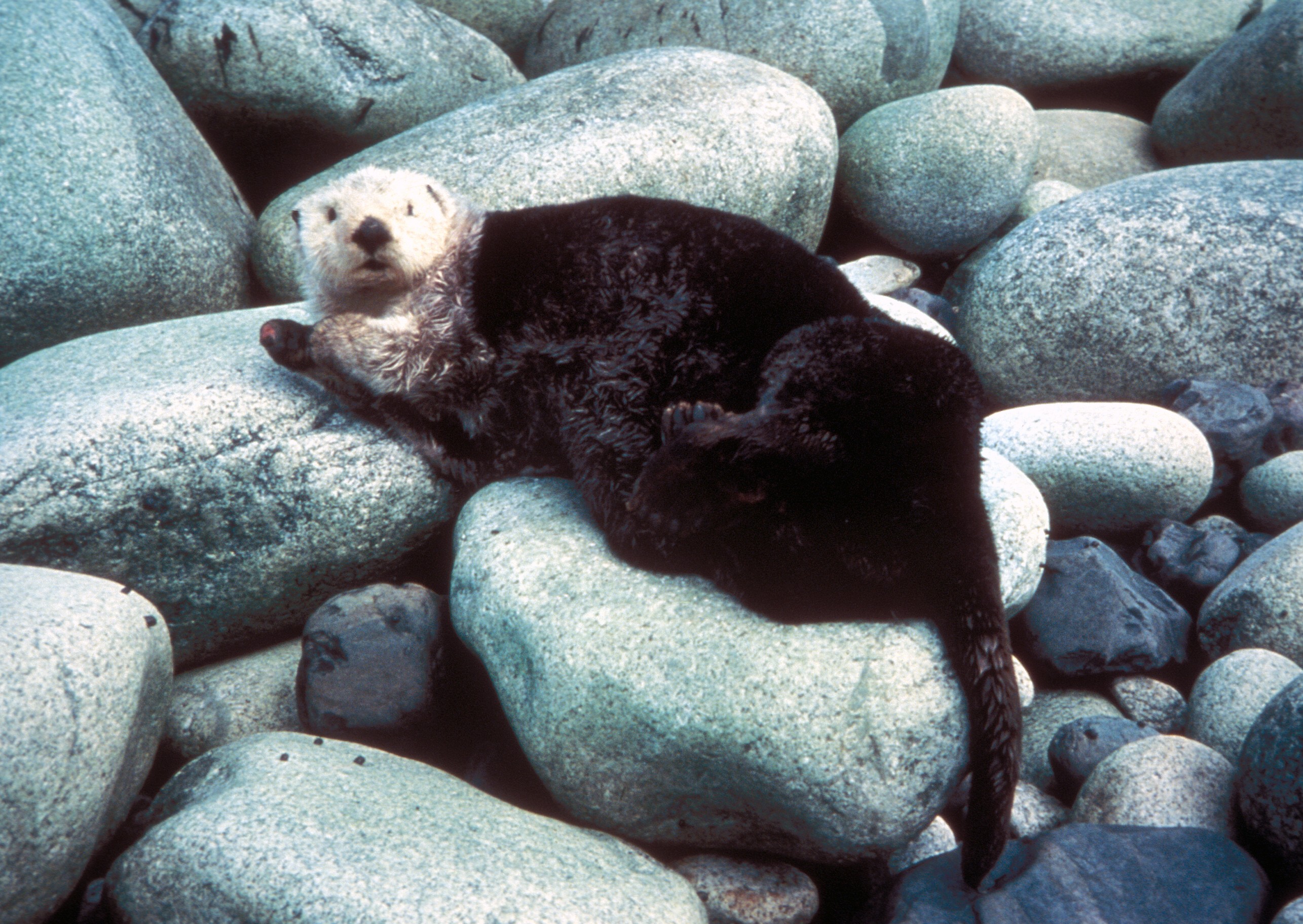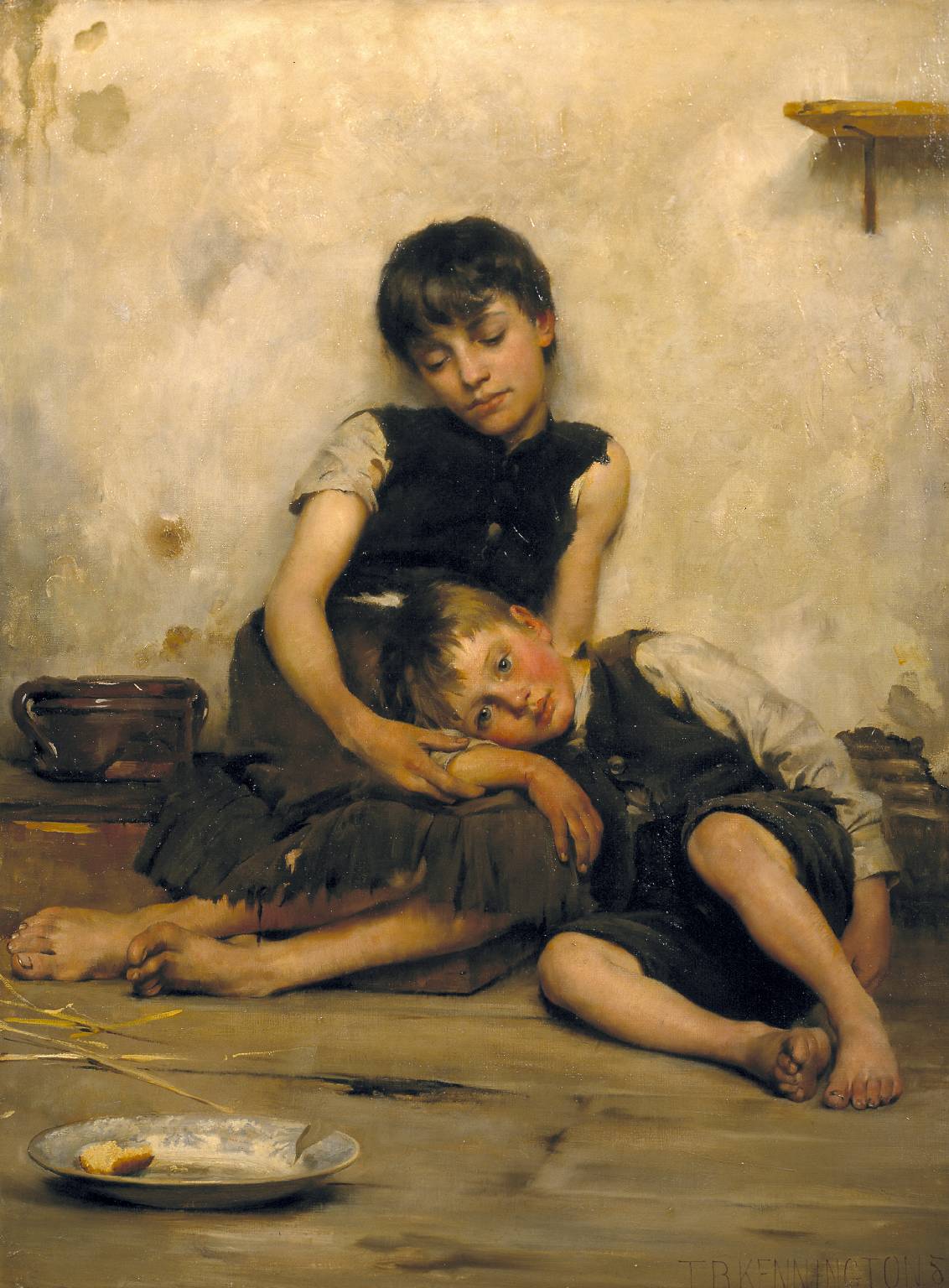|
Aleutian Tradition
The Aleutian Tradition is an archaeological culture which began around 2500 BC and ended in AD 1800. Aleutian artifacts are made out of chipped stone, unlike the ground slate tools used by archaeological cultures on the mainland of Alaska. The Aleutian people lived in semi-subterranean winter houses made from driftwood, whale bone, and peat. They used kayaks, atlatl, atlatls and harpoons to kill sea mammals for sustenance. Around AD 1150, Aleutian houses increased considerably in size, food was stored in special chambers inside the house, and weaponry was becoming more common around these sites. The sustenance pattern changed from relying on sea mammals to eating mostly salmon. Long-distance trade also started increasing community with other local groups. Linguistics There are many hypotheses surrounding the linguistics of the Aleutian peoples. The Aleutian language has been considered by Joseph Greenberg to be a component of the Amerind family linguistic group.Fagan (2005) p.7 ... [...More Info...] [...Related Items...] OR: [Wikipedia] [Google] [Baidu] |
Archaeology
Archaeology or archeology is the study of human activity through the recovery and analysis of material culture. The archaeological record consists of Artifact (archaeology), artifacts, architecture, biofact (archaeology), biofacts or ecofacts, archaeological site, sites, and cultural landscapes. Archaeology can be considered both a social science and a branch of the humanities. It is usually considered an independent academic discipline, but may also be classified as part of anthropology (in North America – the four-field approach), history or geography. The discipline involves Survey (archaeology), surveying, Archaeological excavation, excavation, and eventually Post excavation, analysis of data collected, to learn more about the past. In broad scope, archaeology relies on cross-disciplinary research. Archaeologists study human prehistory and history, from the development of the first stone tools at Lomekwi in East Africa 3.3 million years ago up until recent decades. A ... [...More Info...] [...Related Items...] OR: [Wikipedia] [Google] [Baidu] |
Muskox
The muskox (''Ovibos moschatus'') is a hoofed mammal of the family Bovidae. Native to the Arctic, it is noted for its thick coat and for the strong odor emitted by males during the seasonal rut, from which its name derives. This musky odor has the effect of attracting females during mating season. Its Inuktitut name "umingmak" translates to "the bearded one". Its Woods Cree names "mâthi-môs" and "mâthi-mostos" translate to "ugly moose" and "ugly bison", respectively. In historic times, muskoxen primarily lived in Greenland and the Canadian Arctic of the Northwest Territories and Nunavut. They were formerly present in Eurasia, with their youngest natural records in the region dating to around 2,700 years ago, with reintroduced populations in the American state of Alaska, the Canadian territory of Yukon, and Siberia, and an introduced population in Norway, part of which emigrated to Sweden, where a small population now lives. Evolution Extant relatives The muskox i ... [...More Info...] [...Related Items...] OR: [Wikipedia] [Google] [Baidu] |
Marine Invertebrates
Marine invertebrates are invertebrate animals that live in marine habitats, and make up most of the macroscopic life in the oceans. It is a polyphyletic blanket term that contains all marine animals except the marine vertebrates, including the non-vertebrate members of the phylum Chordata such as lancelets, sea squirts and salps. As the name suggests, marine invertebrates lack any mineralized tissue, mineralized axial skeleton, axial endoskeleton, i.e. the vertebral column, and some have evolved a rigid seashell, shell, test (biology), test or exoskeleton for protection and/or aquatic locomotion, locomotion, while others rely on hydroskeleton, internal fluid pressure to support their bodies. Marine invertebrates have a large variety of body plans, and have been categorized into over 30 phyla. Evolution The earliest animals were marine invertebrates, that is, vertebrates came later. Animals are multicellular eukaryotes, and are distinguished from plants, algae, and fungi by l ... [...More Info...] [...Related Items...] OR: [Wikipedia] [Google] [Baidu] |
Halibut
Halibut is the common name for three species of flatfish in the family of right-eye flounders. In some regions, and less commonly, other species of large flatfish are also referred to as halibut. The word is derived from ''haly'' (holy) and ''butte'' (flat fish), for its popularity on Catholic holy days. Halibut are demersal fish and are highly regarded as a food fish as well as a sport fish. Species A 2018 cladistic analysis based on genetics and morphology showed that the Greenland halibut diverged from a lineage that gave rise to the Atlantic and Pacific halibuts. The common ancestor of all three diverged from a lineage that gave rise to the genus '' Verasper'', comprising the spotted halibut and barfin flounder. * Genus ''Hippoglossus'' ** Atlantic halibut, ''Hippoglossus hippoglossus'' – lives in the North Atlantic ** Pacific halibut, ''Hippoglossus stenolepis'' – lives in the North Pacific Ocean * Genus '' Reinhardtius'' ** Greenland halibut, ''Reinhardt ... [...More Info...] [...Related Items...] OR: [Wikipedia] [Google] [Baidu] |
Harbor Seal
The harbor (or harbour) seal (''Phoca vitulina''), also known as the common seal, is a true seal found along temperate and Arctic marine coastlines of the Northern Hemisphere. The most widely distributed species of pinniped (walruses, eared seals, and true seals), they are found in coastal waters of the northern Atlantic and Pacific oceans, Baltic and North seas. Harbour seals are brown, silvery white, tan, or grey, with distinctive V-shaped nostrils. An adult can attain a length of 1.85 m (6.1 ft) and weigh up to . Blubber under the seal's skin helps to maintain body temperature. Females outlive males (30–35 years versus 20–25 years). Harbor seals stick to familiar resting spots or haulout sites, generally rocky areas (although ice, sand, and mud may also be used) where they are protected from adverse weather conditions and predation, near a foraging area. Males may fight over mates under water and on land. Females bear a single pup after a nine-month gestation, w ... [...More Info...] [...Related Items...] OR: [Wikipedia] [Google] [Baidu] |
Sea Otter
The sea otter (''Enhydra lutris'') is a marine mammal native to the coasts of the northern and eastern Pacific Ocean, North Pacific Ocean. Adult sea otters typically weigh between , making them the heaviest members of the Mustelidae, weasel family, but among the smallest marine mammals. Unlike most marine mammals, the sea otter's primary form of insulation is an exceptionally thick coat of fur, the densest in the animal kingdom. Although it can walk on land, the sea otter is capable of living exclusively in the ocean. The sea otter inhabits nearshore environments, where it dives to the sea floor to Foraging, forage. It preys mostly on marine Invertebrate, invertebrates such as sea urchins, various mollusks and crustaceans, and some species of fish. Its foraging and eating habits are noteworthy in several respects. Its Tool use by sea otters, use of rocks to dislodge prey and to open shells makes it one of the few mammal species to use tools. In most of ... [...More Info...] [...Related Items...] OR: [Wikipedia] [Google] [Baidu] |
Sea Lion
Sea lions are pinnipeds characterized by external ear flaps, long foreflippers, the ability to walk on all fours, short and thick hair, and a big chest and belly. Together with the fur seals, they make up the family Otariidae, eared seals. The sea lions have six extant and one extinct species (the Japanese sea lion) in five genera. Their range extends from the subarctic to tropical waters of the global ocean in both the Northern and Southern Hemispheres, with the notable exception of the northern Atlantic Ocean. Sea lions have an average lifespan of 20–30 years. A male California sea lion weighs on average about and is about long, while the female sea lion weighs and is long. The largest sea lions are Steller's sea lions, which can weigh and grow to a length of . Sea lions consume large quantities of food at a time and are known to eat about 5–8% of their body weight (about ) at a single feeding. Sea lions can move around in water and at their fastest they ... [...More Info...] [...Related Items...] OR: [Wikipedia] [Google] [Baidu] |
Orphan
An orphan is a child whose parents have died, are unknown, or have permanently abandoned them. It can also refer to a child who has lost only one parent, as the Hebrew language, Hebrew translation, for example, is "fatherless". In some languages, such as Swedish language, Swedish, the term is "parentless" and more ambiguous about whether the parents are dead, unknown or absconded, but typically refers to a child or younger adult. In common usage, only a child who has lost both parents due to death is called an orphan. When referring to animals, only the mother's condition is usually relevant (i.e., if the female parent has gone, the offspring is an orphan, regardless of the father's condition). Definitions Various groups use different definitions to identify orphans. One legal definition used in the United States is a minor (law), minor bereft through "death or disappearance of, abandonment or desertion by, or separation or loss from, both parents". In everyday use, an orphan ... [...More Info...] [...Related Items...] OR: [Wikipedia] [Google] [Baidu] |
Slavery
Slavery is the ownership of a person as property, especially in regards to their labour. Slavery typically involves compulsory work, with the slave's location of work and residence dictated by the party that holds them in bondage. Enslavement is the placement of a person into slavery, and the person is called a slave or an enslaved person (see ). Many historical cases of enslavement occurred as a result of breaking the law, becoming indebted, suffering a military defeat, or exploitation for cheaper labor; other forms of slavery were instituted along demographic lines such as race or sex. Slaves would be kept in bondage for life, or for a fixed period of time after which they would be granted freedom. Although slavery is usually involuntary and involves coercion, there are also cases where people voluntarily enter into slavery to pay a debt or earn money due to poverty. In the course of human history, slavery was a typical feature of civilization, and existed in most socie ... [...More Info...] [...Related Items...] OR: [Wikipedia] [Google] [Baidu] |
Middle Class
The middle class refers to a class of people in the middle of a social hierarchy, often defined by occupation, income, education, or social status. The term has historically been associated with modernity, capitalism and political debate. Common definitions for the middle class range from the middle fifth of individuals on a nation's income ladder, to everyone but the poorest and wealthiest 20%. Theories like "Paradox of Interest" use decile groups and wealth distribution data to determine the size and wealth share of the middle class. Terminology differs in the United States, where the term ''middle class'' describes people who in other countries would be described as working class. There has been significant global middle-class growth over time. In February 2009, ''The Economist'' asserted that over half of the world's population belonged to the middle class, as a result of rapid growth in emerging countries. It characterized the middle class as having a reasonable amo ... [...More Info...] [...Related Items...] OR: [Wikipedia] [Google] [Baidu] |
Nobility
Nobility is a social class found in many societies that have an aristocracy. It is normally appointed by and ranked immediately below royalty. Nobility has often been an estate of the realm with many exclusive functions and characteristics. The characteristics associated with nobility may constitute substantial advantages over or relative to non-nobles or simply formal functions (e.g., precedence), and vary by country and by era. Membership in the nobility, including rights and responsibilities, is typically hereditary and patrilineal. Membership in the nobility has historically been granted by a monarch or government, and acquisition of sufficient power, wealth, ownerships, or royal favour has occasionally enabled commoners to ascend into the nobility. There are often a variety of ranks within the noble class. Legal recognition of nobility has been much more common in monarchies, but nobility also existed in such regimes as the Dutch Republic (1581–1795), the Republic ... [...More Info...] [...Related Items...] OR: [Wikipedia] [Google] [Baidu] |
Society
A society () is a group of individuals involved in persistent social interaction or a large social group sharing the same spatial or social territory, typically subject to the same political authority and dominant cultural expectations. Societies are characterized by patterns of relationships ( social relations) between individuals who share a distinctive culture and institutions; a given society may be described as the sum total of such relationships among its constituent members. Human social structures are complex and highly cooperative, featuring the specialization of labor via social roles. Societies construct roles and other patterns of behavior by deeming certain actions or concepts acceptable or unacceptable—these expectations around behavior within a given society are known as societal norms. So far as it is collaborative, a society can enable its members to benefit in ways that would otherwise be difficult on an individual basis. Societies vary based o ... [...More Info...] [...Related Items...] OR: [Wikipedia] [Google] [Baidu] |









